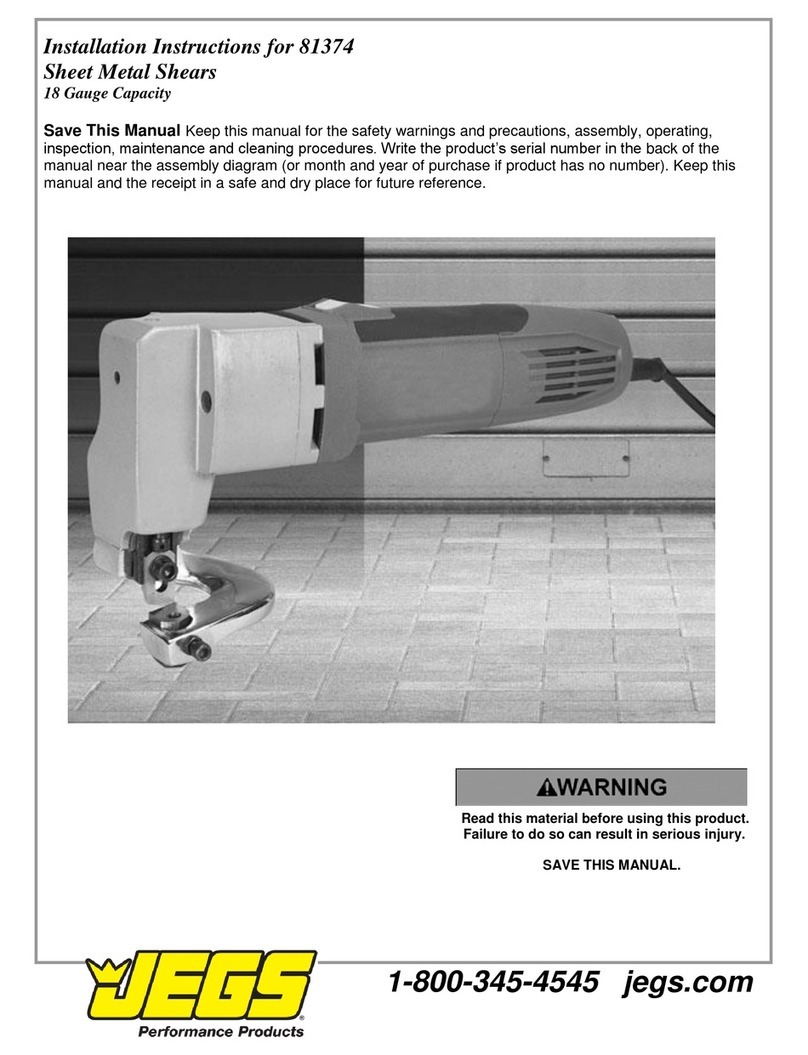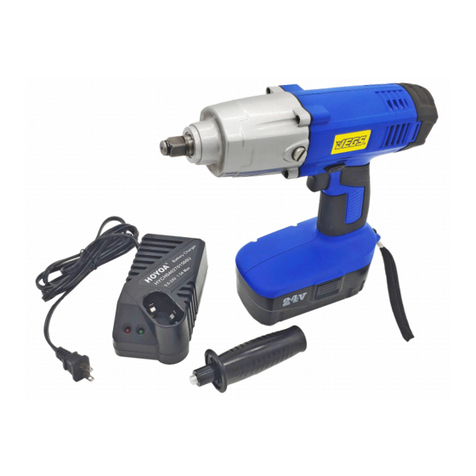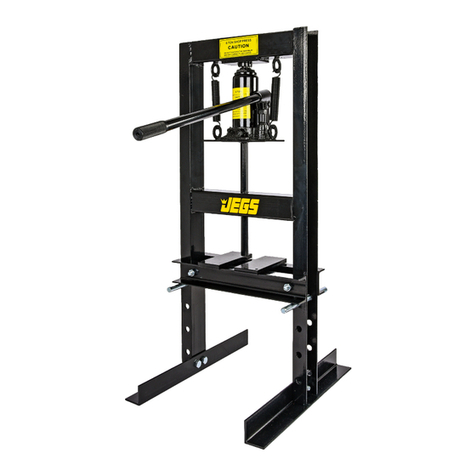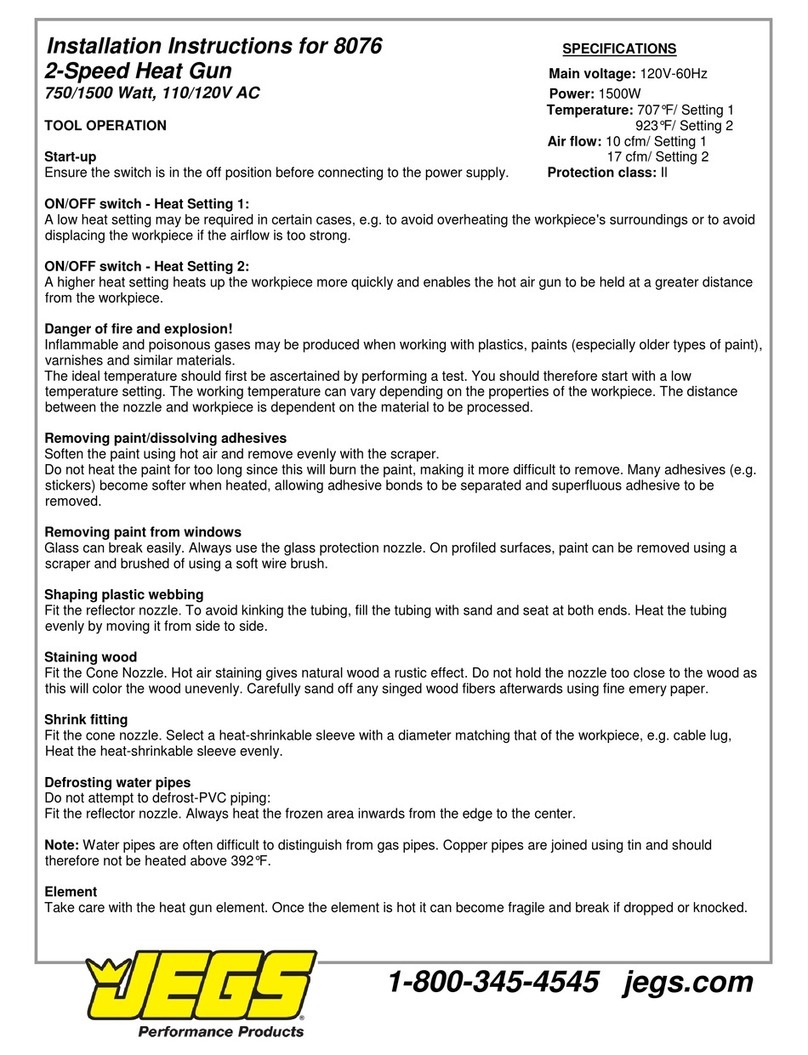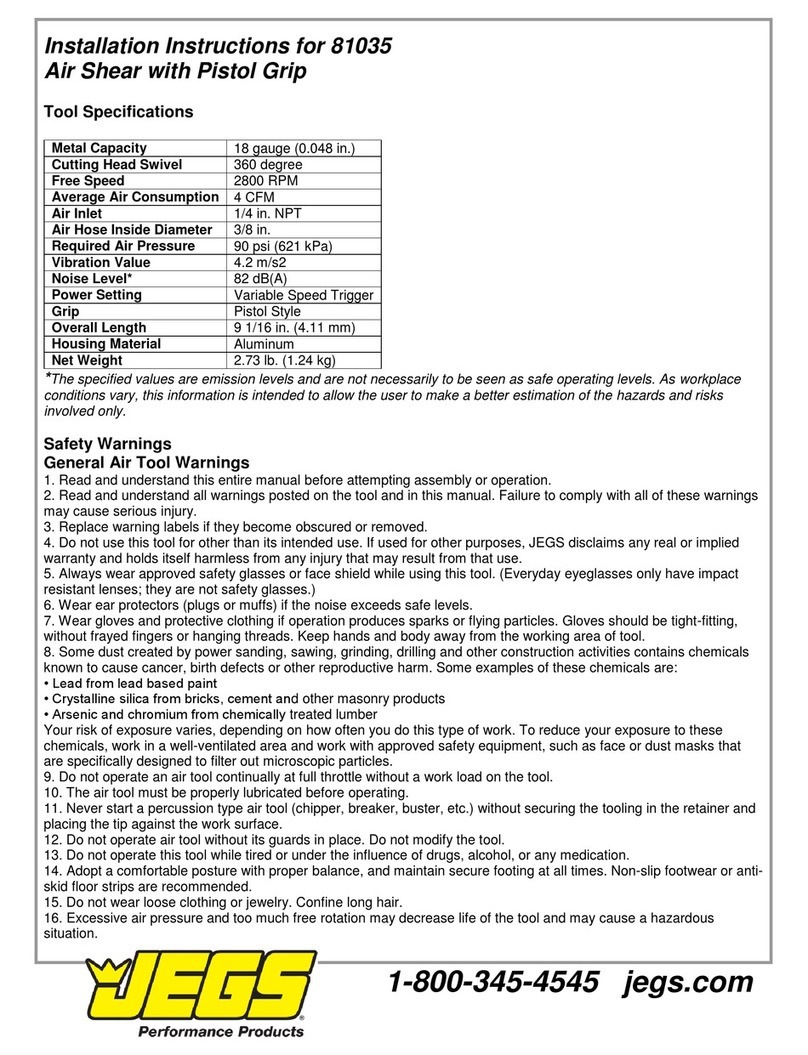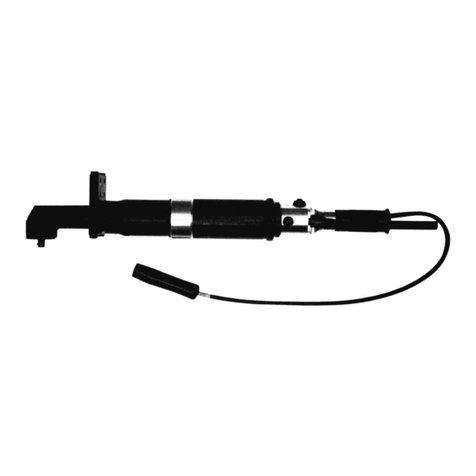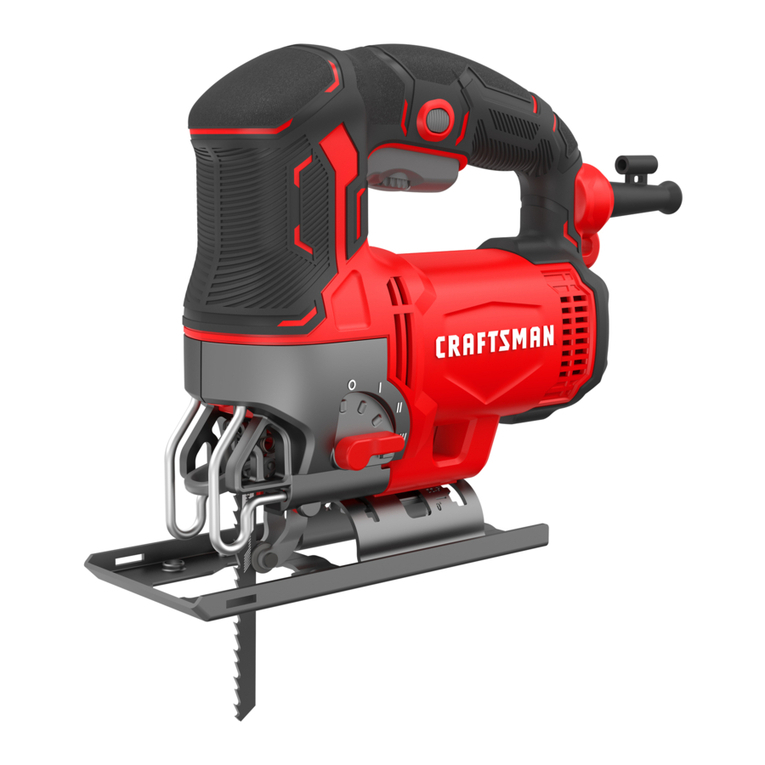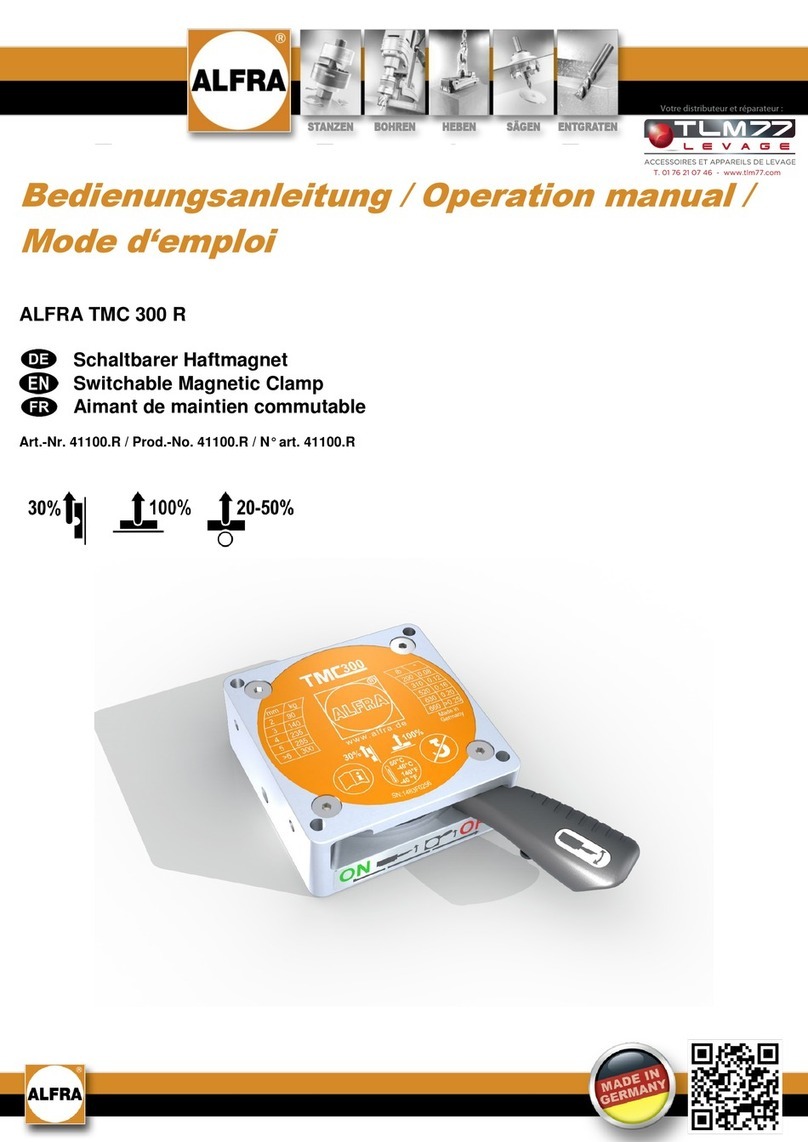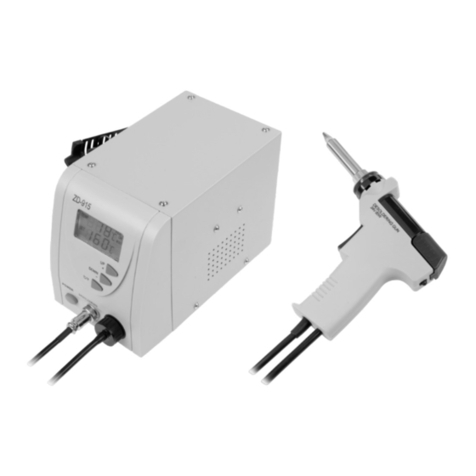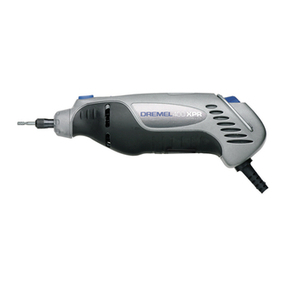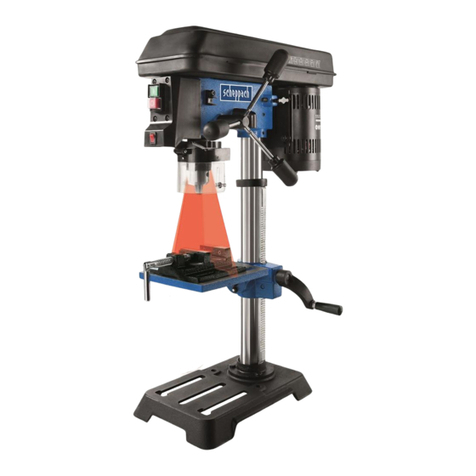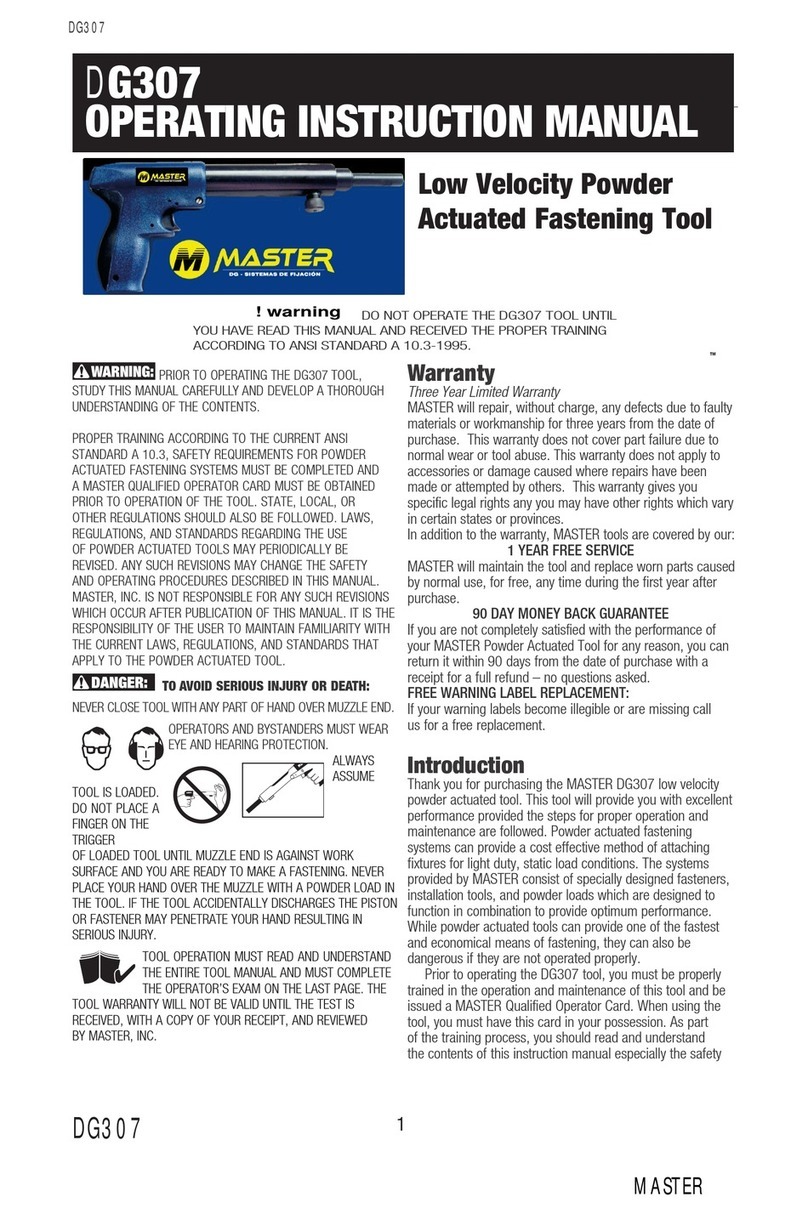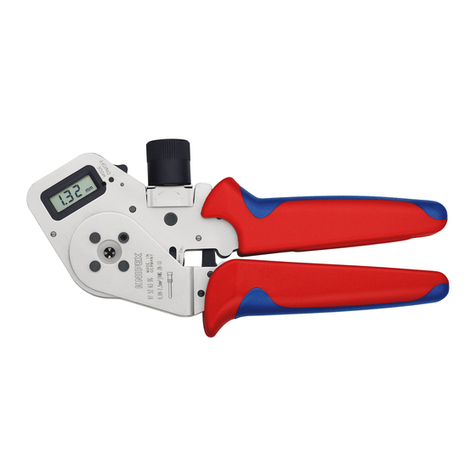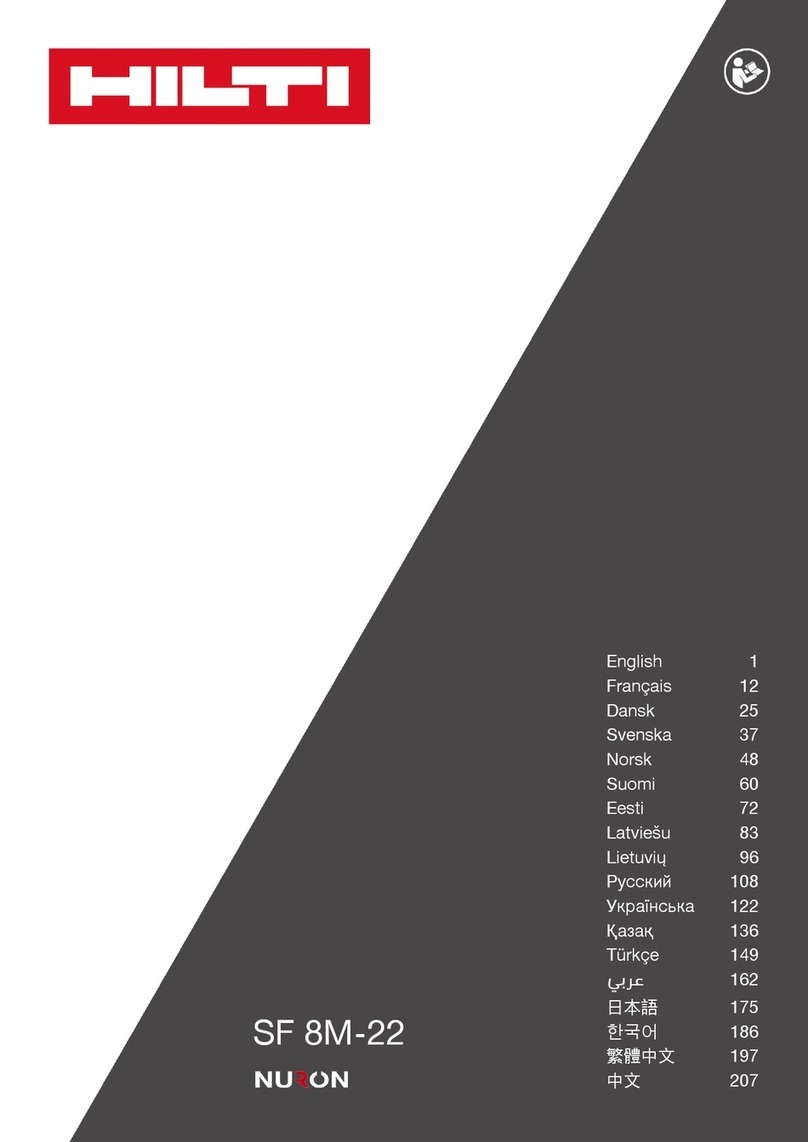Jegs 81500 User manual

Installation Instructions for 81500
Vertical Sandblast Cabinet
11 CFM @ 80 PSI
Save This Manual Keep this manual for the safety warnings and precautions, assembly, operating, inspection,
maintenance and cleaning procedures.
Keep this manual and the receipt in a safe and dry place for future reference.
When unpacking, make sure that the product is intact and undamaged. If any parts are missing or broken, please
contact us immediately.
WARNING!
Read this material before using this product. Failure to do so can result in serious injury. SAVE THIS MANUAL.
IMPORTANT SAFETY INSTRUCTIONS
INSTRUCTIONS PERTAINING TO A RISK OF FIRE, ELECTRIC SHOCK, OR INJURY TO PERSONS
WARNING —When using tools, basic precautions should always be followed, including the following.
General
To reduce the risks of electric shock, fire, and injury to persons, read all the instructions before using tool.
Work Area
1. Keep the work area clean and well lit. Cluttered benches and dark areas increase the risks of electric shock, fire,
and injury to persons.
2. Do not operate the tool in explosive atmospheres, such as in the presence of flammable liquids, gases, or dust. The
tool is able to create sparks resulting in the ignition of the dust or fumes.
3. Keep bystanders, children, and visitors away while operating the tool. Distractions could result in the loss of control
of the tool.
Personal Safety
1 Stay alert. Watch what you are doing and use common sense when operating the tool. Do not use the tool
while tired or under the influence of drugs, alcohol, or medication. A moment of inattention while operating the tool
increases the risk of injury to persons.
2. Dress properly. Do not wear loose clothing or jewelry. Contain long hair. Keep hair, clothing, and gloves
away from moving parts. Loose clothes, jewelry, or long hair increases the risk of injury to persons as a result of
being caught in moving parts.
3. Avoid unintentional starting. Be sure the trigger is released before connecting to the air supply. Do not
connect the tool to the air supply with the switch on.
4. Remove adjusting keys and wrenches before turning the tool on. A wrench or a key that is left attached to a
rotating part of the tool increases the risk of personal injury
5. Do not overreach. Keep proper footing and balance at all times. Proper footing and balance enables better
control of the tool in unexpected situations.
6. Use safety equipment. A dust mask, non-skid safety shoes and a hard hat must be used for the applicable
conditions.
7. Always wear eye protection. Wear ANSI-approved safety goggles.
8. Always wear hearing protection when using the tool. Prolonged exposure to high intensity noise is able to cause
hearing loss.
Tool Use and Care
1. Use clamps or another practical way to secure and support the workpiece to a stable platform. Holding the
work by hand or against the body is unstable and is able to lead to loss of control.
2 Do not force the tool. Use the correct tool for the application. The correct tool will do the job better and safer at the
rate for which the tool is designed.
3. Do not use the tool if the switch does not turn the tool on or off. Any tool that cannot be controlled with the
switch is dangerous and must be repaired.
4 Disconnect the tool from the air source before making any adjustments, changing accessories, or storing the
tool. Such preventive safety measures reduce the risk of starting the tool unintentionally. Turn off and detach the air
supply, safely discharge any residual air pressure, and release the throttle and/or turn the switch to its off position
before leaving the work area
1-800-345-4545 jegs.com

5. Store the tool when it is idle out of reach of children and other untrained persons. A tool is dangerous in the
hands of untrained users.
6. Maintain the tool with care.
7. Check for misalignment or binding of moving parts, breakage of parts, and any other condition that affects
the tool's operation. If damaged, have the tool serviced before using. Many accidents are caused by poorly
maintained tools. There is a risk of bursting if the tool is damaged
8. Use only accessories that are identified by the manufacturer for the specific tool model. Use of an accessory
not intended for use with the specific tool model, increases the risk of injury to persons.
Assembly Precautions
1. Assemble only according to these instructions. Improper assembly can create hazards.
2. Wear ANSI-approved safety goggles and heavy-duty work gloves during assembly.
3. Keep assembly area clean and well lit.
4. Keep bystanders out of the area during assembly.
5. Do not assemble when tired or the influence of drugs or medication.
Silicosis and Aluminum Oxide Warnings
WARNING! Abrasive blasting with sand containing crystalline silica can cause serious or fatal respiratory disease.
Exposure to crystalline silica may cause silicosis (a serious lung disease); cancer and death. Exposure to aluminum
oxide (a dust generated from material removing processes) can result in eye, skin and breathing irritation. Always use a
NIOSH (National Institute for Occupational Safety and Health) approved respirator and safety goggles. Avoid skin
exposure. Proper ventilation in the work area is required. Read and understand the 10 recommended measures below
to reduce crystalline silica exposures in the workplace and prevent silicosis and silicosis related deaths.
NIOSH recommends the following measures to reduce crystalline silica exposures in the workplace and
prevent silicosis and silicosis-related deaths:
1. Prohibit silica sand (or other substances containing more than 1% crystalline silica) as an abrasive blasting material
and substitute less hazardous materials.
2. Conduct air monitoring to measure worker exposures.
3. Use containment methods such as blast-cleaning machines and cabinets to control hazard and protect adjacent
workers from exposure.
4. Practice good personal hygiene to avoid unnecessary exposure to silica dust.
5. Wear washable or disposable protective clothes at the work site. Shower and change into clean clothes before
leaving the work site to prevent contamination of cars, homes and other work areas.
6. Use respiratory protection when source controls cannot keep silica exposures below the NIOSH REL.
7. Provide medical examinations for all workers who may be exposed to crystalline silica.
8. Post signs to warn workers about the hazard and to inform them about required protective equipment.
9. Provide workers with training that includes information about health effects, work practices and protective equipment
for crystalline silica.
10. Report all cases of silicosis to State health departments and to OSHA or the Mine Safety and Health Administration
(MSHA).
Vibration Precautions
This tool vibrates during use. Repeated or long-term exposure to vibration may cause temporary or permanent physical
injury, particularly to the hands, arms and shoulders, To reduce the risk of vibration-related injury:
1. Anyone using vibrating tools regularly or for an extended period should first be examined by a doctor and then have
regular check-ups to ensure medical problems are not being caused or worsened from use. Pregnant women or people
who have impaired blood circulation to the hand, past hand injuries, nervous system disorders, diabetes, or Raynaud's
Disease should not use this tool. If you feel any symptoms related to vibration (such as tingling, numbness, and white
or blue fingers), seek medical advice as soon as possible.
2. Do not smoke during use. Nicotine reduces the blood supply to the hands and fingers increasing the risk of vibration-
related injury.
3. Use tools with the lowest vibration when there is a choice.
4. Include vibration free periods each day of work.
5. Grip tool as lightly as possible (while still keeping safe control of it). Let the tool do the work.
6. To reduce vibration, maintain tool as explained in this manual.If abnormal vibration occurs, stop immediately.
SAVE THESE INSTRUCTIONS!
1-800-345-4545 jegs.com

Functional Description
Specifications
Average Air
Consumption
9.5 CFM @ 90 PSI
Maximum Working
Pressure
125 PSI
Air Inlet
1/4"-18 NPT
Abrasive Capacity
40 lb.
Dust Port
2-1/2" OD
Viewing Window
21” W x 10” H
Working Area
33-1/2" W x 22” D x 18" H
Overall Dimensions
36-1/2” W x 23" D x 54-1/2”
H
Included Nozzles
0.18', 0.19", 0.22”, 0.27"
Initial Tool Set Up / Assembly
Read the ENTIRE IMPORTANT SAFETY INFORMATION section at the beginning of this manual including all text
under subheadings therein before set up or use of this product.
Note: For additional information regarding the parts listed in the following pages, refer to the Assembly Diagram near
the end of this manual.
Light Clamps
Attach the Light Clamps (35) to the inside of Cabinet Rear
Plate (19) using the Bolts Which are pre-assembled on the
Light clamps.
Gloves
1. Secure the Glove Mounting Rings (32) and Glove Seal
Rings (30) to the Cabinet Front Plate (17) using tie
Flange Bolts and Nuts (45).
2. Slide the Gloves (39) over the Glove Mounting Rings and
secure in place with the Glove Clamps (31).
45
1-800-345-4545 jegs.com

Dust Port
Attach the Dust Pott (22) to the outside of the Left Cabinet Plate (18) using the
Flange Bolts and Nuts M5x25 (46).
Cabinet
Note: All gaskets are pre-fitted on needed plates. Use a punch or nail to make
holes in the Foam Gasket for bolt installation.
TOP TIP:
Place the top plate on a table edge with the gaskets facing up.
Note: Align the three middle holes along the Top Plate (16) first. then align the
remaining holes when assembling. Leave all connections loose until all bolts are
in place. Use the Flange Bolts and nuts M6x12 (44) to secure the sections in
place.
1. Attach the Front Cabinet Plate (17), and the Back Cabinet Plate (19) to the top edges of the top plate (16)
overlapping the front and back flanges over the edges of the top plate (16).
2. Place the Left Cabinet Plate (18) over edges of the Front and Back Cabinet Plates and the Top Plate.
3. Place the Door Frame to the other side of the Front and Back Cabinet Plates and Top plate and secure with flange
bolts and nuts M5x25 (46). Align the holes of the Door Hinge and Door (24/13) along the back edge of the Cabinet
Back Plate (19) and secure in place with bolts and nuts pre-assembled on door and hinge assembly.
4. After all panels are in place, tighten all connections.
1-800-345-4545 jegs.com

Light and Switch
1. Place the Light (37) in the Light Clamps (35) and
secure with Flat Screw M4x6.
2. Guide the wire of the Light through the hole of the
Cabinet Left Plate (18).
3. Insert the end of the wire into the switch housing (21).
Connect the light wires to the switch.
-BLUE light wire to BLUE switch wire
-BROWN light wire to BROWN switch
4. Install the Switch (21) and Switch Cover (20) on the
Cabinet Left Plate (18) With the Bolts pre-assembled on
the switch housing. Install the Door Lock (12) on the
Cabinet Front Plate (17) with the bolts and nuts pre-
assembled on the Door Lock.
Funnel
1. Place the Funnel Left and Right Plates (7) on the
inside flanges of the Funnel Front and Rear Plates (6)
and secure in place with the Flange Bolts and nuts
M6x12 (44).
2. Slide the Funnel Mouth (5) over the bottom of the
assembly and secure in place with the Bolts, and Nuts
pre-assembled on the Funnel Mouth.
1-800-345-4545 jegs.com

Legs
Align the holes of the Legs (1) and Cabinet holes as
shown, and secure in place with the Flange Bolts and
nuts M6x12 (44).
Connecting the Funnel, Hose and Cabinet
1. Place the Bottom Plate (9), Screen Frame (10), Steel Screen (11) on top of the Funnel and secure the assembly to
the bottom of the Cabinet with Flange Bolts and Nuts M6x35 (41).
2. Attach the Abrasive Gun Air Inlet Hose to the inside lower right side of the Cabinet and the Hose Inlet Fitting (42) to
the outside, using the Bolts and Nuts M6x35 (41).
3. Slide the Suction Hose (8)
end into the Funnel through
the Screen.
1-800-345-4545 jegs.com

Lower Shelf and Window
1. Install the Lower Shelf (2) with the Flange Bolts and
nuts M6x12 (44).
2. Layer the Window Protective Film (25), Glass (27),
Acrylic Glass (26) and Frame (28) over the opening on
the Cabinet Top Plate and secure in place with the
Flange Bolts and Nuts M5x25 (46).
Note: This air tool may be shipped with a protective plug covering the air inlet. Remove this plug before set up
Air Supply
WARNING! To prevent serious injury from explosion:
Use only clean, dry, regulated, compressed air to power this tool. Do not use oxygen, carbon dioxide, combustible
gases, or any other bottled gas as a power source for his tool.
1. Incorporate a filter, regulator With pressure gauge, dryer, in-line shutoff valve, and quick coupler for best service. An
in-line shutoff ball valve is an important safety device because it controls the air supply even if the air hose is
ruptured. The shutoff valve should be a ball valve because it can be closed quickly.
Note: An oiler system should not be used with this tool. The oil will mix with the material being propelled, causing tool
to clog.
2. Attach an air hose to the compressor's air outlet. Connect the air hose to the air inlet of the tool. Other components,
such as a coupler plug and quick coupler, will make operation more efficient, but are not required
WARNING! TO PREVENT SERIOUS INJURY FROM ACCIDENTAL OPERATION:
Do not install a female quick coupler on the tool. Such a coupler contains an air valve that will allow the air tool to
retain pressure and operate accidentally after the air supply is disconnected.
Note: Air flow, and therefore tool performance, can be hindered by undersized air supply components. The air hose
must be long enough to reach the work area with enough extra length to allow free movement while working.
1-800-345-4545 jegs.com

3. Turn the tool's throttle or switch to the off position.
4. Close the in-line shutoff valve between the compressor and the tool.
5. Turn on the air compressor according to the manufacturer's directions and allow it to build up pressure until it cycles
off.
6. Adjust the air compressors output regulator so that the air output is enough to properly power the tool, but the output
will not exceed the tool's maximum air pressure at any time. Adjust the pressure gradually, while checking the air output
gauge to set the right pressure range.
7. Inspect the air connections for leaks. Repair any leaks found
8. If the tool will not be used at this time, turn off and detach the air supply, safely discharge any residual air pressure,
and release the throttle and/or turn the switch to its off position to prevent accidental operation.
Note: Residual air pressure should not be present after the tool is disconnected from the air supply. However, it is a
good safety measure to attempt to discharge the tool in a safe fashion after disconnecting to ensure that the tool is
disconnected and not powered.
Operating Instructions
Read the ENTIRE IMPORTANT SAFETY INFORMATION section at the beginning of this manual including all text
under subheadings therein before set up or use of this product.
Inspect tool before use, looking for damaged, loose, and missing parts. If any problems are found, do not use tool until
repaired.
Tool Set Up
WARNING! TO PREVENT SERIOUS INJURY FROM ACCIDENTAL OPERATION:
Tum off the tool, detach the air supply, safely discharge any residual air pressure in the tool, and release the trigger
before performing any inspection, maintenance, or cleaning procedures.
TO PREVENT SERIOUS INJURY:
Do not adjust or tamper with any control or component in a way not specifically explained within this manual. Improper
adjustment can result in tool failure or other serious hazards.
1. Remove the Dust Port Cover (29) on the left side of the Cabinet and install a dust collection system (sold separately)
to the Dust Port opening to remove media dust while blasting. If not using a dust collection system, check that the Dust
Port Cover is in place over the Dust Port opening on the left side of the Cabinet
2. Fill the bottom of the Cabinet with no more than 40 pounds of fine abrasive material. Fill the funnel area about 1/2
full. To prevent clogging, do not overfill. The included nozzles are not designed for use with steel shot.
WARNING! Do not use sand or abrasives that contain crystalline silica Abrasive blasting with sand containing rystalline
silica can cause serious or fatal respiratory disease.
Work Piece and Work Area Set Up
1. Designate a work area that is clean and well-lit. The work area must not allow access by children or pets to prevent
distraction and injury.
2. Route the air hose along a safe route to reachthe work area without creating a tripping hazard or exposing the air
hose to possible damage. The air hose must be long enough to reach the work area with enough extra length to allow
free movement while working.
1-800-345-4545 jegs.com

General Operating Instructions
1. Connect the air compressor hose to the Hose Inlet Fitting (42).
2. Plug in and turn on the Cabinet light.
3. Turn on the vacuum of the dust collection system (sold separately).
Note: When using a vacuum dust collector, clean the filter periodically to maintain adequate suction and
effectiveness of the vacuum
4. Open the Door of the Blast Cabinet and place the workpiece in the center of the Cabinet.
5. Close the door and secure the latch.
6. Set the compressor's air pressure between 90 and 125 PSI.
7. Place your hands into the Gloves inside the Cabinet. Make sure your fingers are in the proper positions and that you
can easily move your hands and grip objects.
8. Hold the workpiece in one hand, positioning your fingers so that the glove is not in the way of the area you will be
blasting. While working, reposition your grip as needed to ensure that all areas of the workpiece will be contacted with
the blast material.
9. Grip the Abrasive Gun with the other hand and point the nozzle at the bottom of the Cabinet.
10. Squeeze the trigger.
11. Check that the abrasive media is flowing through the suction hose with no leaks. Release the trigger and correct
any leaks if needed. Otherwise begin blasting the workpiece
WARNING! Do not aim the nozzle at your fingers or the Blast Gloves. If Gloves are punctured or you feel air blowing in
the Glove, replace the immediately. Do not use a damaged or punctured Glove.
12. If the tool requires more force to accomplish the task, verify that the tool receives sufficient, unobstructed airflow
(CFM) and increase the pressure (PSI) output of the regulator up to the maximum air pressure rating of this tool.
CAUTION! TO PREVENT INJURY FROM TOOL OR ACCESSORY FAILURE: Do not exceed the tool's maximum
air pressure rating. If the tool still does not have sufficient force at maximum pressure and sufficient airflow, then a
larger tool may be required
13. When finished, or to check the progress of your blasting:
a. Release the trigger, lay the workpiece on the floor of the Cabinet and remove your hands from the gloves
b. Tum off the compressor and dust collection system (if equipped). Wait for the air inside the Cabinet to clear.
c. Open the Cabinet door and remove the workpiece. If the workpiece needs more blasting, resume from step 4
of these operating instructions.
14. To prevent accidents, release the trigger, detach the air supply, then squeeze and release the trigger once more to
safely discharge any residual air pressure in the tool. Empty the Funnel of blast media (see User Maintenance
Instructions section). Clean external surfaces of the tool with a clean, dry cloth. Then store the tool indoors out of
children's reach.
1-800-345-4545 jegs.com

User Maintenance Instructions
Procedures not specifically explained in this manual must be performed only by a qualified technician.
WARNING!
TO PREVENT SERIOUS INJURY FROM ACCIDENTAL OPERATION:
Tum off the tool, detach the air supply, safely discharge any residual air pressure in the tool, and release the trigger
before performing any inspection, maintenance, or cleaning procedures.
TO PREVENT SERIOUS INJURY FROM TOOL FAILURE:
Do not use damaged equipment. If abnormal noise, vibration, or leaking air occurs, have the problem corrected before
further use.
Cleaning, Maintenance, and, Lubrication
Note: These procedures are in addition to the regular checks and maintenance explained as part of the regular
operation of the air-operated tool.
1. Daily –Air Supply Maintenance: Every day maintain the air supply according to the component manufactures’
instructions. Drain the moisture filter regularly. Performing routine air supply maintenance will allow the tool to operate
more safely and will also reduce wear on the tool.
2. After use, empty the Cabinet Funnel of blast media: CAUTION! Wear ANSI-approved Safety Goggles and NIOSH-
approved dust mask/ respirator when emptying the abrasive media.
a. Place a container (sold separately), which is large enough to hold all the blast media, under the mouth of the
Funnel.
b. Tum the handle on the Funnel Mouth to open the Funnel and allow all the abrasive media to flow into the
container.
c. Close the Funnel Mouth
1-800-345-4545 jegs.com

Troubleshooting
Problem
Possible Causes
Likely Solutions
Decreased output
1. Not enough air pressure and/ or
air flow.
2. Obstructed trigger.
3. Blocked air inlet screen (if
equipped).
4. Air leaking from loose housing.
5. Mechanism contaminated.
6. Abrasive media level too low
7. Lubrication being used
1. Check for loose connections and
make sure that air supply is providing
enough air flow (CFM) at required
pressure (PSI) to the tool's air inlet.
Do not exceed maximum air
pressure.
2. Clean around trigger to ensure
free movement.
3. Clean air inlet screen of buildup
4. Make sure housing is properly
assembled and tight.
5. Have qualified technician clean
and lubricate mechanism. Install in-
line filter in air supply as stated in
Setup: Air Supply.
6. Add more abrasive media to the
Funnel.
7. An oiler system should not be
used with this tool. The oil will mix
with the material being propelled,
causing tool to clog
Housing heats during use
Worn parts.
Have qualified technician inspect
internal mechanism and replace
parts as needed.
Severe air leakage (Slight air
leakage is normal, especially on
older tools.)
1. Cross-threaded housing
components.
2. Loose housing.
3. Damaged valve or housing
4. Dirty, worn or damaged valve.
1. Check for incorrect alignment and
uneven gaps. If cross-threaded,
disassemble and replace damaged
parts before use.
2. Tighten housing assembly. If
housing cannot tighten properly
internal parts may be misaligned
3. Replace damaged components.
4. Clean or replace valve assembly
Abrasive media not effective.
Abrasive media has become worn
down from use.
Replace abrasive media
Abrasive media does not fire from
Abrasive Gun
1. Lubrication being used
2. Abrasive media size is too large
for Nozzle.
3. Abrasive media too moist and is
sticking together
1. An oiler system should not be
used with this tool. The oil will mix
with the material being propelled,
causing tool to clog.
2. Replace Nozzle with a nozzle
large enough to handle abrasive
media size or use finer media.
3. Replace media with dry, fresh
media. Incorporate an air drier on the
air supply.
Light inside Cabinet does not work
1. Bulb is burned out.
2. Power cord is not plugged in.
3. Switch is off
4. Outlet is non-functioning.
1. Replace light bulb
2. Check that the power cord is
properly plugged into an outlet.
3. Turn the Light Power Switch on.
4 Have electrical outlet serviced by a
qualified electrician.
*WARNING! Follow all safety precautions whenever diagnosing or servicing the tool. Disconnect air supply
before service.
1-800-345-4545 jegs.com

Parts List & Diagram
PLEASE READ THE FOLLOWING CAREFULLY
THE MANUFACTURER AND/OR DISTRIBUTOR HAS PROVIDED THE PARTS LIST AND ASSEMBLY DIAGRAM IN THIS MANUAL AS A
REFERENCE TOOL ONLY. NEITHER THE MANUFACTURER NOR DISTRIBUTOR MAKES ANY REPRESENTATION OR WARRANTY OF ANY
KIND TO THE BUYER THAT HE OR SHE IS QUALIFIED TO MAKE ANY REPAIRS TO THE PRODUCT, OR THAT HE OR SHE IS QUALIFIED TO
REPLACE ANY PARTS OF THE PRODUCT. IN FACL THE MANUFACTURER AND/OR DISTRIBUTOR EXPRESSLY STATES THAT ALL
REPAIRS AND PARTS REPLACEMENTS SHOULD BE UNDERTAKEN BY CERTIFIED AND LICENSED TECHNICIANS, AND NOT BY THE
BUYER. THE BUYERASSUMESALL RISKAND LIABILITY ARISING OUT OF HIS OR HER REPAIRS TO THE ORIGINAL PRODUCT OR
REPLACEMENT PARTS THERETO, OR ARISING OUT OF HIS OR HER INSTALLATION OF REPLACEMENT PARTS THERETO.
1-800-345-4545 jegs.com

Part
Description
QTY
Part
Description
QTY
1
Leg
4
26
Acrylic Glass
1
2
Lower Shelf
1
27
Glass with Protective Film (25)
1
3
Funnel Handle
1
28
Window Frame
1
4
Funnel Cover
1
29
Dust Collector Port Cover
1
5
Funnel Mouth (preass.with 3
and 4)
4
30
Glove Seal Ring
2
6
Funnel Plate (Front,Rear)
2
31
Glove Clamp
2
7
Funnel Plate (Left, Right)
2
32
Glove Mounting Ring
2
8
Sand Pickup Tube
1
33
Metal Liner (preassembled on
13)
1
9
Bottom Plate (with foam on
each side)
1
34
Vent Cover
1
10
Screen Frame
1
35
Light Clamp + Cross Pan Head
Screw M4x6
2
11
Steel Screen Strip
1
36
Self-Tapping-ScrewM4x10
(preassembled on 13)
12
12
Door Lock with Bolts
1
37
Light Tube
1
13
Door with Foam Seal (14)
1
38
Transformer
1
14
Foam Seal
1
39
Gloves
2
15
Door Frame
1
40
Abrasive Blasting Gun (1
nozzle)
1
16
Cabinet Top Plate
1
41
Flange Bolt and Nut M6x35
16
17
Cabinet Front Plate
1
42
Air Inlet Fitting with Rubber
Seal
18
Cabinet Left Plate
1
43
Vacuum Suction Hose
1
19
Cabinet Rear Plate
1
44
Flange Bolt and Nut M6x12
80
20
Switch Box with Switch (21)
1
45
Flange Bolt and Nut M5x18 For
Glove Ring
12
21
Switch
1
46
Flange Bolt and Nut M5x25
20
22
Dust Collector Port
1
47
Vacuum Suction Hose Clamp
2
23
Seal Ring pre-assembled on
Door (19)
1
48
Nozzle Set (1 preassembled in
Gun)
4
24
Hinge preassembled on Door
(13)
1
49
Air Hose
1
25
Protective Film (1 Mounted + 4
spare)
5
50
Air Hose Clamp
2
1-800-345-4545 jegs.com
Table of contents
Other Jegs Power Tools manuals
Popular Power Tools manuals by other brands
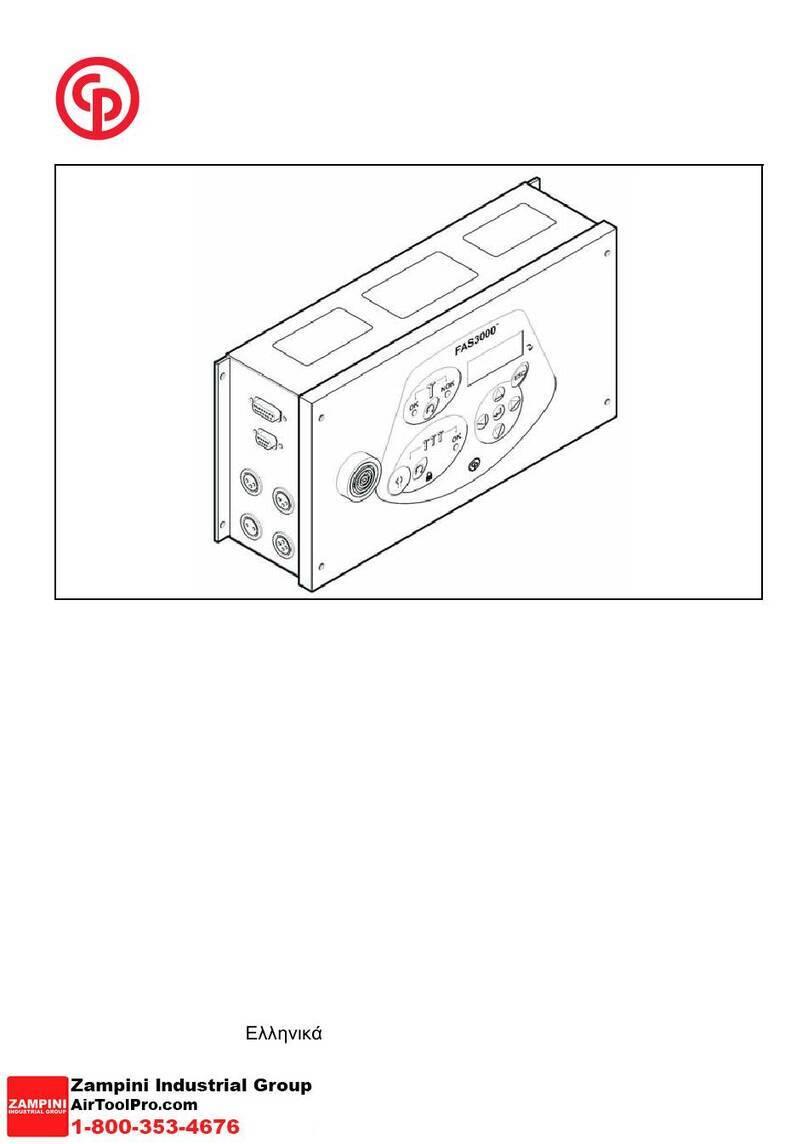
CP
CP Desoutter FAS 3000 manual
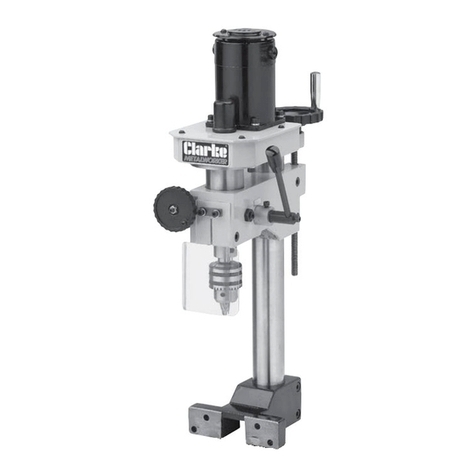
Clarke
Clarke Metalworker CL251MH Operating & maintenance instructions
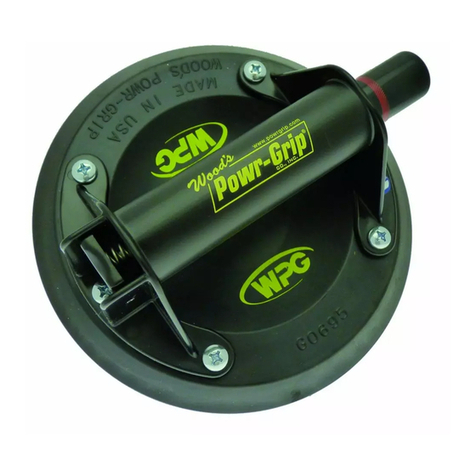
WOOD'S POWR-GRIP
WOOD'S POWR-GRIP N6000P Guide to maintenance, troubleshooting, and repair
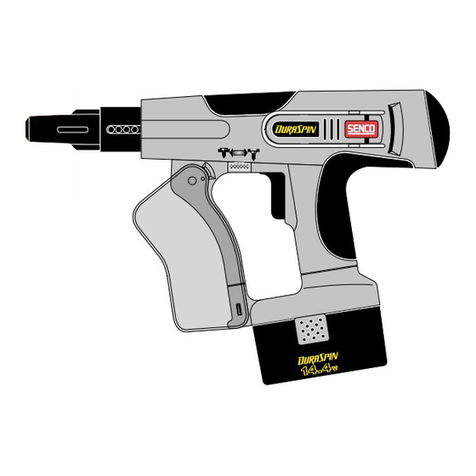
Senco
Senco NFD880 operating instructions
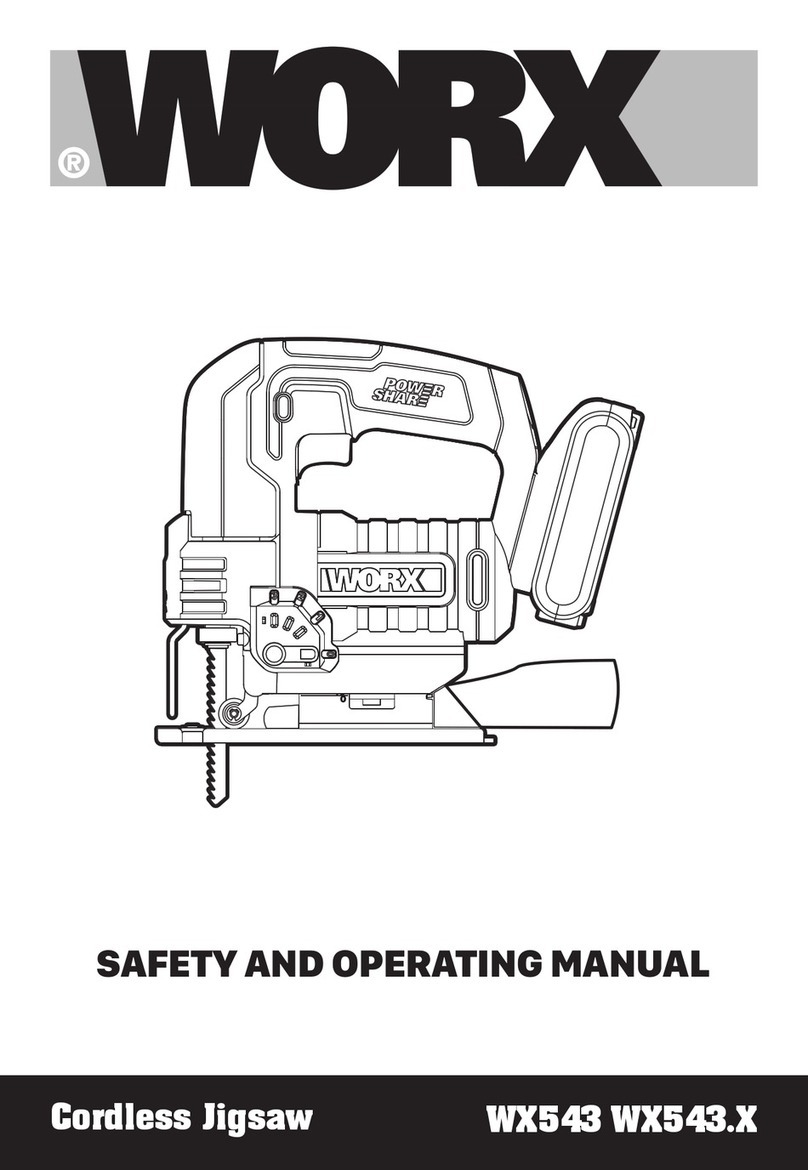
Worx
Worx WX543 Safety and operating manual
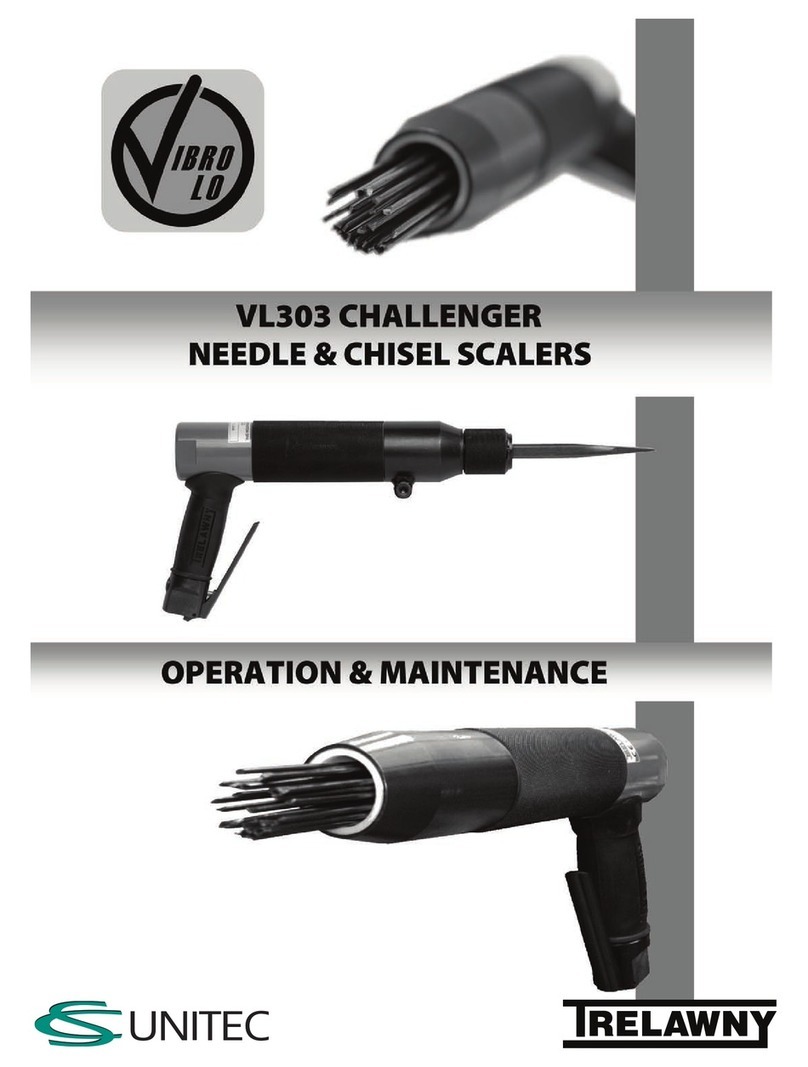
CS Unitec
CS Unitec VL303 CHALLENGER Operation & maintenance manual
